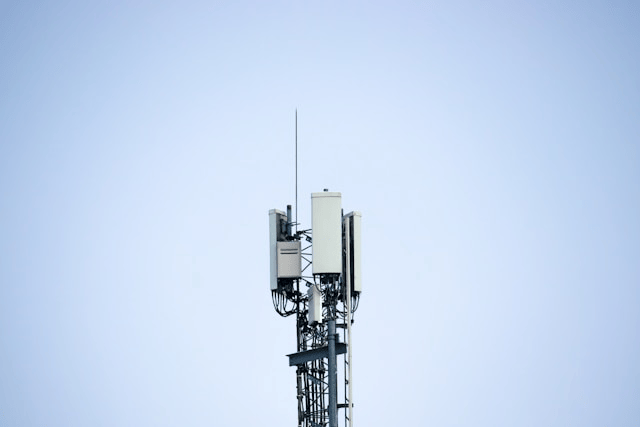With the growing reliance on high-speed internet for everything from remote work to streaming movies and gaming, choosing the right connection type has never been more important. Many people often find themselves comparing 4G, 5G, and fiber when deciding on an internet service. But what exactly is the difference between 4G, 5G, and fiber?
In this article, we’ll break down each technology, explain how they work, compare their performance, and help you determine which is best for your needs.
What Is 4G?
4G, or fourth-generation wireless technology, is the successor to 3G and has been widely used globally since the early 2010s. It is a mobile network designed to provide faster data transfer, improved voice quality, and better mobile internet experiences compared to earlier generations.
Key Features of 4G:
-
Download speeds: 10–100 Mbps (in real-world scenarios)
-
Latency: Around 50 milliseconds
-
Technology: Uses radio frequencies to transmit data wirelessly to mobile devices
-
Coverage: Broad and widely available, including rural areas
Use Cases:
-
Mobile browsing and streaming
-
GPS and navigation
-
Video calling
-
Social media apps
Pros:
-
Wide coverage area
-
Reliable for general mobile use
-
No need for cables or fixed installations
Cons:
-
Slower speeds compared to 5G and fiber
-
Higher latency affects real-time gaming or video conferencing
-
Signal can degrade with congestion or distance from the tower
What Is 5G?
5G is the fifth generation of mobile network technology. It builds on the foundation of 4G but offers significantly faster speeds, lower latency, and the ability to connect more devices simultaneously. This makes it ideal for a wide range of advanced applications, including real-time gaming, autonomous vehicles, and smart cities.
Key Features of 5G:
-
Download speeds: Up to 10 Gbps (varies by network and region)
-
Latency: As low as 1 millisecond
-
Technology: Uses higher-frequency bands (especially mmWave) for increased capacity and speed
-
Coverage: Expanding but still limited in rural areas
Use Cases:
-
AR/VR and immersive experiences
-
High-speed mobile streaming
-
Smart home devices and IoT
-
Remote work with ultra-low latency needs
Pros:
-
Extremely fast speeds
-
Very low latency
-
Supports large numbers of connected devices
Cons:
-
Still not widely available in rural or remote areas
-
mmWave 5G has limited range and poor indoor penetration
-
Requires newer devices and 5G-compatible hardware
What Is Fiber Internet?
Fiber internet, short for fiber-optic internet, is a wired broadband technology that uses strands of glass or plastic to transmit data as pulses of light. It’s currently the fastest and most reliable form of internet available for homes and businesses.
Key Features of Fiber:
-
Download and upload speeds: 100 Mbps to 10 Gbps (symmetrical in most cases)
-
Latency: Extremely low (comparable or better than 5G)
-
Technology: Light pulses sent through fiber-optic cables
-
Coverage: Mainly in urban and suburban areas; less common in rural regions
Use Cases:
-
Streaming in 4K or 8K resolution
-
Online gaming and cloud gaming
-
Video conferencing for remote work
-
Backing up large files or data transfers
-
Smart home integration and high-device usage
Pros:
-
Consistent and high-speed connectivity
-
Symmetrical upload and download speeds
-
Unaffected by weather or signal interference
-
Great for households with multiple users and heavy internet usage
Cons:
-
Installation can be costly or unavailable in some areas
-
Not portable limited to your physical location
4G vs 5G vs Fiber: Side-by-Side Comparison
Feature |
4G |
5G |
Fiber |
|---|---|---|---|
Speed |
10–100 Mbps |
Up to 10 Gbps |
Up to 10 Gbps |
Latency |
~50 ms |
1–10 ms |
<1–5 ms |
Mobility |
High (mobile use) |
High |
None (fixed location) |
Coverage |
Widely available |
Growing, mostly urban |
Urban/suburban only |
Reliability |
Moderate |
Moderate to High |
Very High |
Installation |
None (mobile) |
New device may be needed |
Requires home setup |
Best for |
Browsing, basic apps |
Gaming, AR, smart devices |
Streaming, remote work |
Cost |
Moderate |
Varies by provider |
May be higher upfront |
The best internet solution depends on your location, usage, budget, and goals. Here’s how to choose:
Choose 4G if:
-
You need mobile internet on the go
-
You live in an area without 5G or fiber availability
-
You use the internet mostly for browsing and streaming at moderate quality
Choose 5G if:
-
You live in a 5G-covered area
-
You want high-speed mobile internet
-
You’re into mobile gaming, streaming, or using multiple smart devices
Choose Fiber if:
-
You need the fastest, most stable connection
-
You work from home, stream in 4K, or game online
-
Fiber is available in your neighborhood
For many users, a combination of fiber for home and 5G (or 4G) for mobile use offers the best of both worlds.
Conclusion
Understanding the difference between 4G, 5G, and fiber is essential when choosing the best internet service for your lifestyle. While 4G offers broad mobile access, 5G brings blazing speeds and responsiveness to mobile networks, and fiber provides unmatched speed and reliability for home or office setups.









